Abstract
By using microautoradiography, light-stimulated utilization of dissolved amino acids for natural marine phytoplankton assemblages was demonstrated. The <2-μm-size (diameter) picoplankton, known to be a dominant fraction of marine primary production, revealed a widespread capability for this process. Autofluorescent (chlorophyll a-containing) picoplankton and some larger phytoplankton from diverse oceanic locations, as well as isolates of the representative cyanobacterial picoplankton Synechococcus spp. (WH7803, WH8101), showed light-stimulated incorporation of amino acids at trace concentrations. Dark-mediated amino acid utilization was dominated by nonfluorescent bacterial populations. Among autofluorescent picoplankton, light-stimulated exceeded dark-mediated amino acid incorporation by 5 to 75%; light-stimulated amino acid incorporation was only partially blocked by the photosystem II inhibitor 3(3,4-dichloro-phenyl)-1,1-dimethy-lurea (2 × 10-5 M), suggesting a photoheterotrophic incorporation mechanism. Parallel light versus dark incubations with glucose and mannitol indicated a lack of light-stimulated utilization of these nonnitrogenous compounds. Since marine primary production is frequently nitrogen limited, light-mediated auxotrophic utilization of amino acids and possibly other dissolved organic nitrogen (DON) constituents may represent exploitation of the relatively large DON pool in the face of dissolved inorganic nitrogen depletion. This process (i) increases the efficiency of DON retention at the base of oceanic food webs and (ii) may in part be responsible for relatively high rates of picoplankton production under conditions of chronic dissolved inorganic nitrogen limitation. Picoplanktonic recycling of organic matter via this process has important ramifications with respect to trophic transfer via the “microbial loop.”
Full text
PDF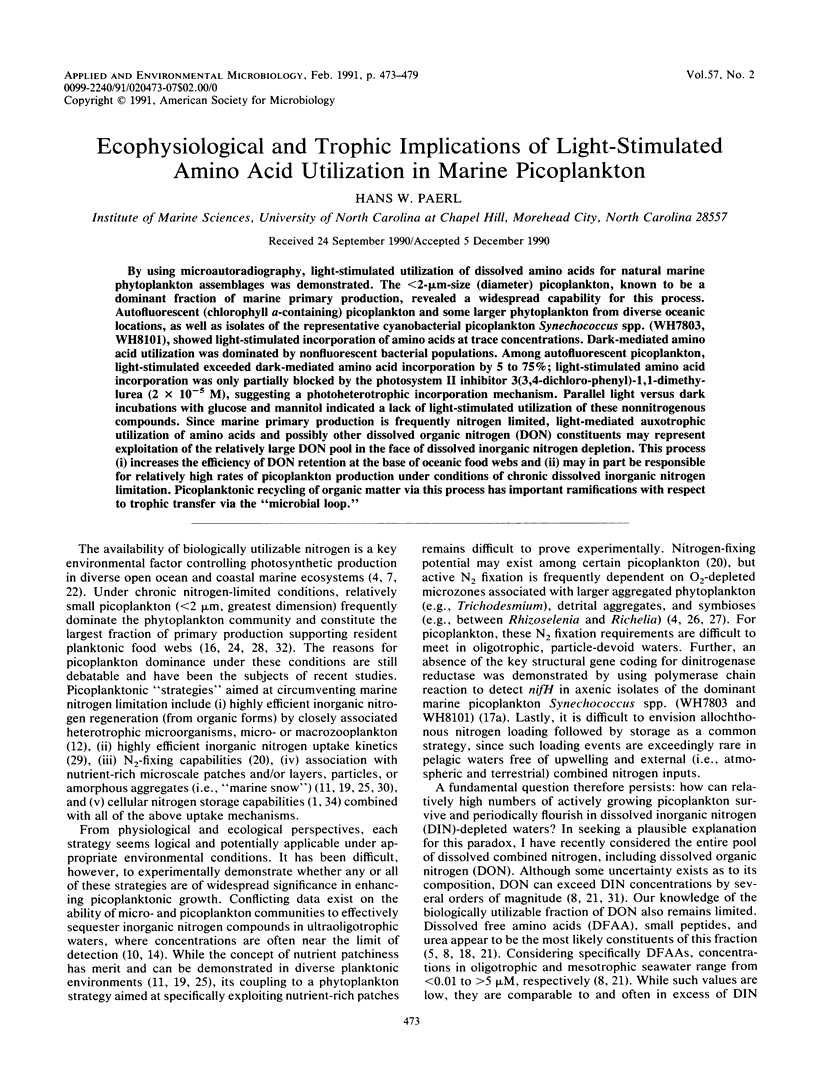
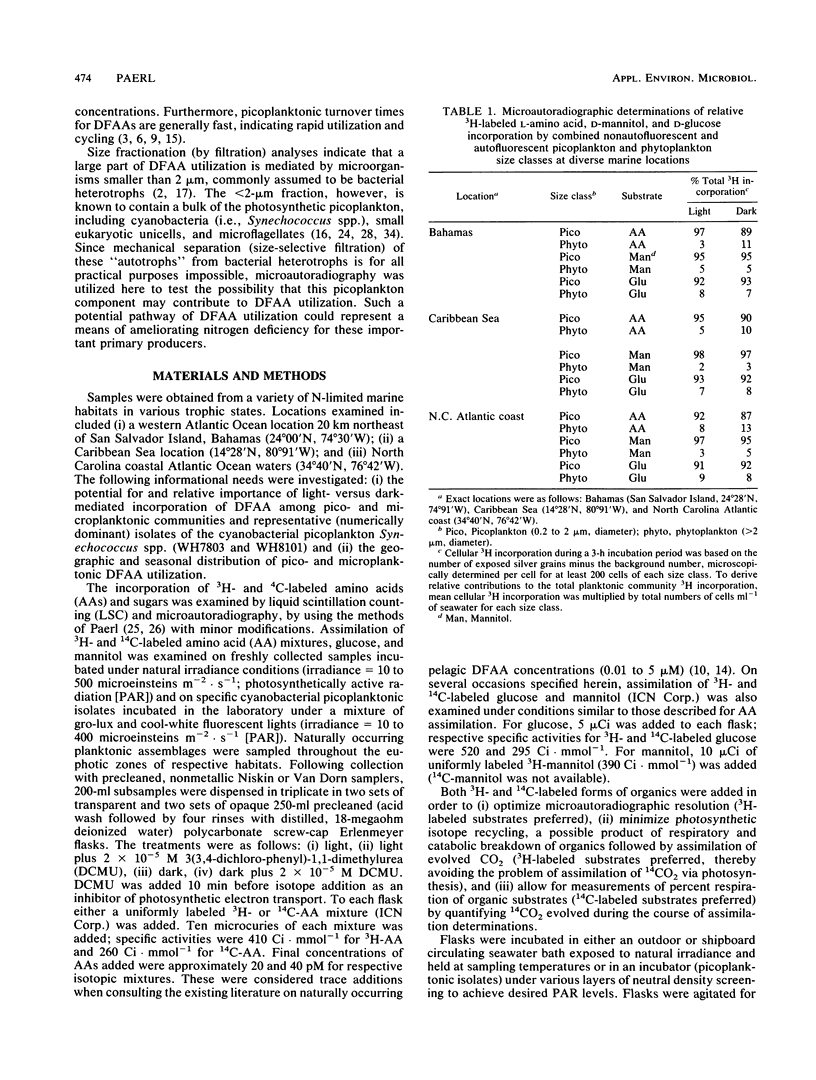

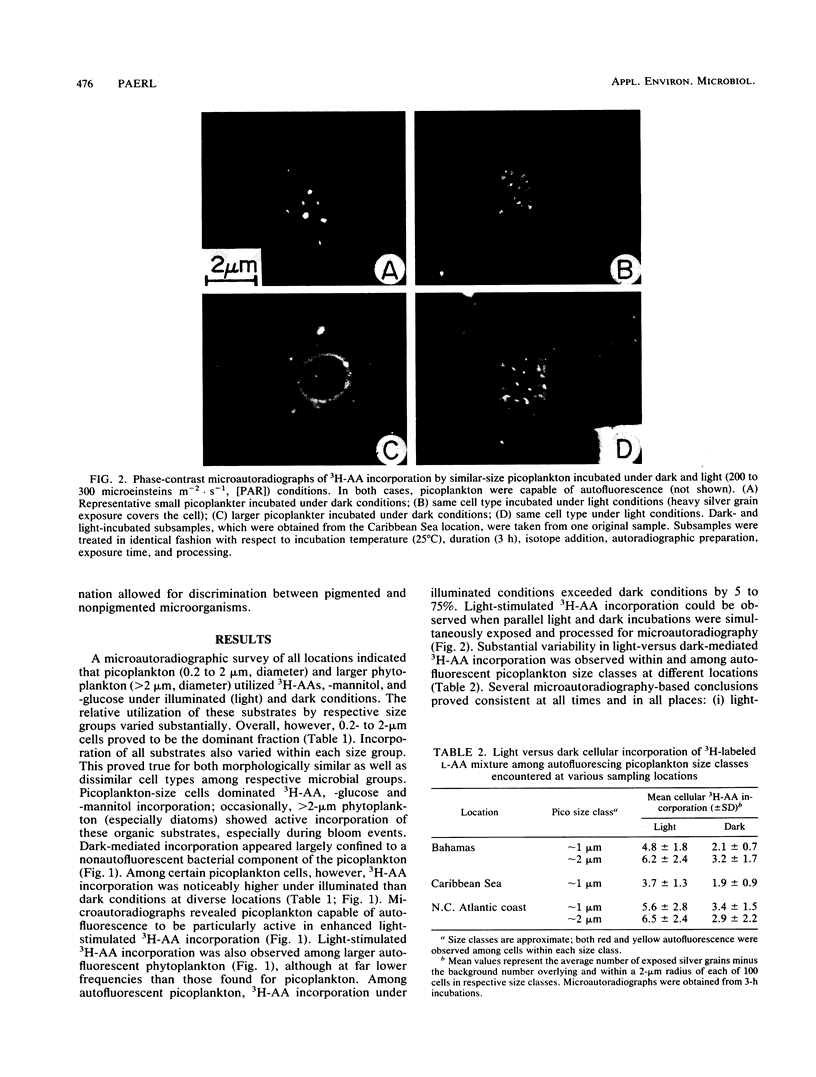
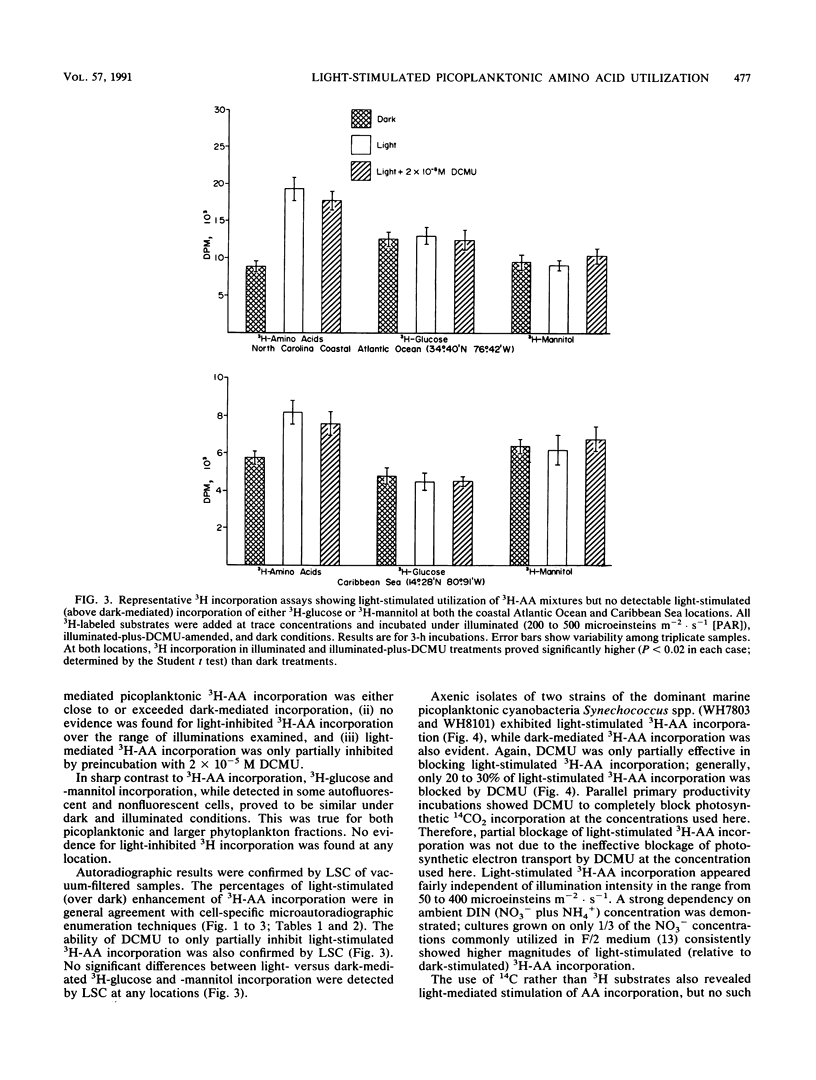
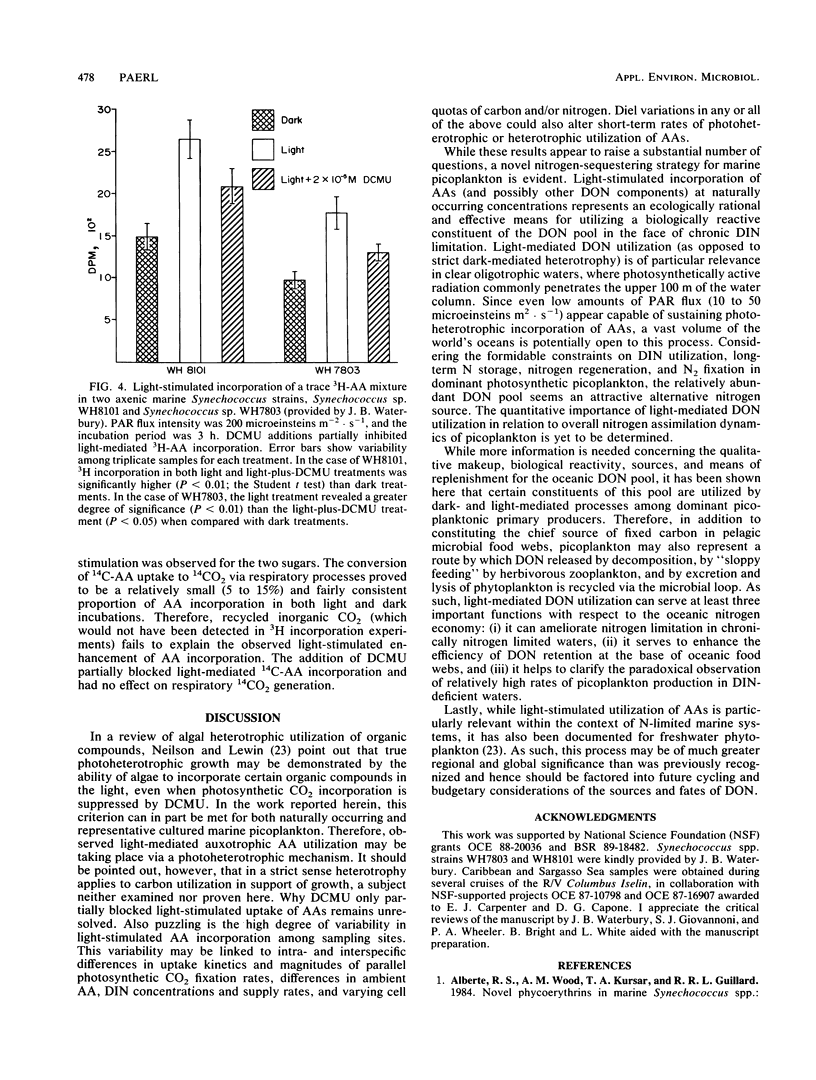
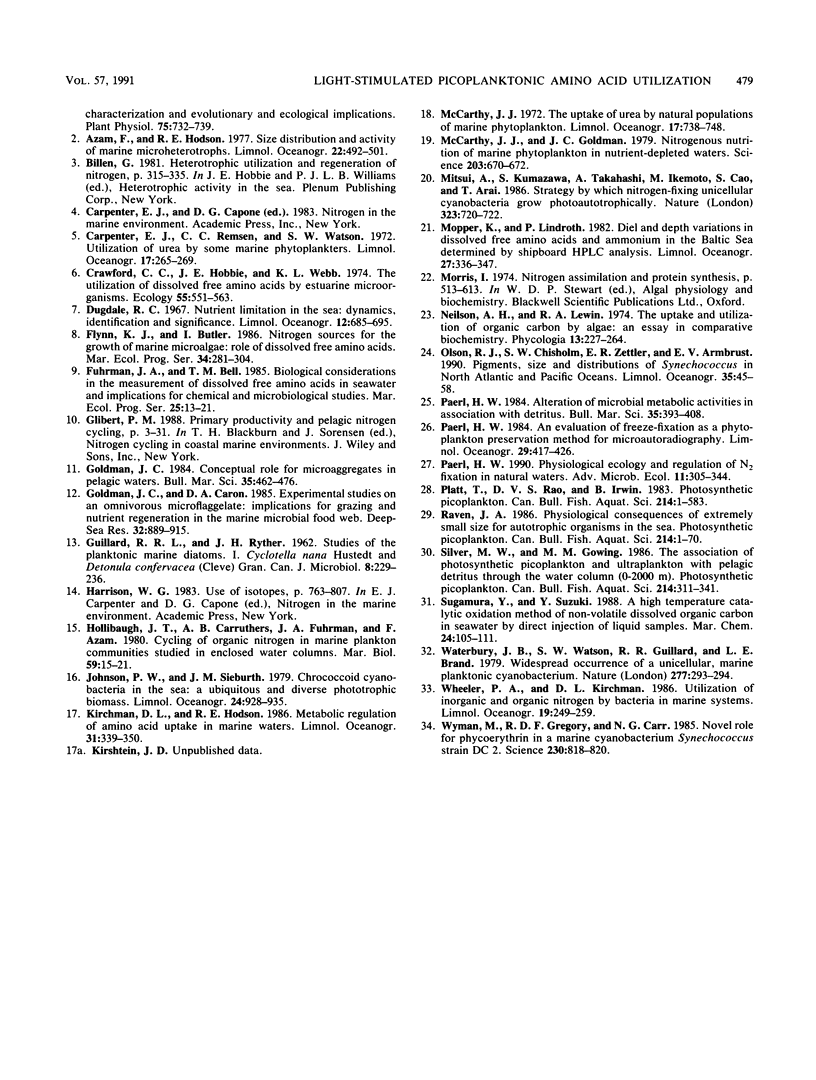
Images in this article
Selected References
These references are in PubMed. This may not be the complete list of references from this article.
- Alberte R. S., Wood A. M., Kursar T. A., Guillard R. R. Novel Phycoerythrins in Marine Synechococcus spp. : Characterization and Evolutionary and Ecological Implications. Plant Physiol. 1984 Jul;75(3):732–739. doi: 10.1104/pp.75.3.732. [DOI] [PMC free article] [PubMed] [Google Scholar]
- GUILLARD R. R., RYTHER J. H. Studies of marine planktonic diatoms. I. Cyclotella nana Hustedt, and Detonula confervacea (cleve) Gran. Can J Microbiol. 1962 Apr;8:229–239. doi: 10.1139/m62-029. [DOI] [PubMed] [Google Scholar]
- McCarthy J. J., Goldman J. C. Nitrogenous nutrition of marine phytoplankton in nutrient-depleted waters. Science. 1979 Feb 16;203(4381):670–672. doi: 10.1126/science.203.4381.670. [DOI] [PubMed] [Google Scholar]
- Wyman M., Gregory R. P., Carr N. G. Novel Role for Phycoerythrin in a Marine Cyanobacterium, Synechococcus Strain DC2. Science. 1985 Nov 15;230(4727):818–820. doi: 10.1126/science.230.4727.818. [DOI] [PubMed] [Google Scholar]




